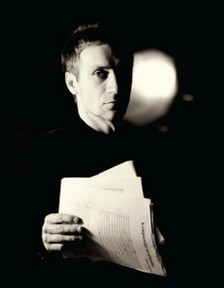
Ljubomir Nikolić (1976) enrolled in the class of Miroslav Štatkić at the Department of Composition of the Academy of Arts in Novi Sad. He graduated under the supervision of Rajko Maksimović in 2002, with Ratnik (Warrior), a symphonic piece. He is participating in a project supported by EU funding for culture, titled Rivers of Europe, as a composer and music performer. Also, he is part of a historical project (for the first time in this part of Europe), a concert of 30 harps, where he presented two pieces, a Bulgarian and a Serbian Dance, as part of the 13th International Harp Festival held in Belgrade in 2014. He is the founder of E-ACT, an international ensemble that performs only his works. Works by Nikolić have been performed at renowned concert venues such as Carnegie Hall (New York) and the Great Auditorium of Kolarac Hall (Belgrade), whereas his pieces for percussion (Drops; Marimbophonia) were presented at the World Percussionists Summit held in the United States. Works by Nikolić have been presented in Italy, England, Poland, Romania, Austria, Croatia, Slovakia, Hungary, Bulgaria, Germany, and the United States. He is currently employed at the Academy of Arts in Novi Sad, where he works as an expert associate in composition and electro-acoustic music.
Hibernations, for clarinet, violoncello and piano. The term hibernation usually refers to winter dormancy in some endothermic animals, but is also used in medicine (in treating mental patients with artificial hibernation), and in computers. The last decade has seen more and more research into how and to what degree the state of hibernation might be used for scientific explorations initiated by NASA and ESA, whereby this artificially caused state in astronauts might facilitate conducting experiments and explorations of certain planets, by means of more expedient and practical procedures. Hibernations presents its musical material in a similar way, using an attempt at hibernation, in a musical sense, to manipulate time, through a series of short movements. The composer’s initial idea was to use a ‘non-classical’ multi-movement formal pattern to organise the material on the level of macro- and micro-structure, which make an impression of a ‘different’ (hibernative) temporal element.


